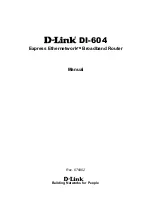
Deployment Guide
53
H
IVE
AP 340 P
RODUCT
O
VERVIEW
Smart PoE
The HiveAP 300 series applies the Aerohive concept of smart PoE to adjust power consumption as necessitated by
varying levels of available power. No adjustments are needed when the power level is 20 W (watts) or higher. If the
available power drops to a range between 18 and 20 W, the HiveAP disables the ETH1 interface. If the level drops to
the 15 – 18 W range, it then switches from 3x3 MIMO (Multiple In, Multiple Out) to 2x3 (see
"MIMO" on page 57
). In
rare cases when the power drops between 13.6 and 15 W and further power conservation is necessary, the HiveAP
reduces the speed on ETH0 from 10/100/1000 Mbps to 10/100 Mbps. Finally, in the event that there is a problem
with the PoE switch or Ethernet cable and the power falls between 0 and 13.6 W, the HiveAP disables its wireless
interfaces and returns its ETH0 and ETH1 interfaces to 10/100/1000 Mbps speeds. Through the application of smart
PoE, the HiveAP 340 can make power usage adjustments so that it can continue functioning even when the available
power level drops.
Aggregate and Redundant Interfaces
By default ETH0 and ETH1 act as two individual Ethernet interfaces. When both interfaces are connected to the
network and are in backhaul mode, the HiveAP transmits broadcast traffic only through ETH0. The HiveAP transmits
broadcast traffic through ETH1 only when ETH0 does not have network connectivity. When both Ethernet interfaces
are connected to the network and are in access mode, then the HiveAP transmits broadcast traffic through all the
access interfaces: ETH0, ETH1, and all wireless subinterfaces in access mode.
In addition to using ETH0 and ETH1 as individual interfaces, you can combine them into an aggregate interface
(agg0) to increase throughput, or combine them into a redundant interface (red0) to increase reliability. The logical
red0 and agg0 interfaces support all the settings that you can configure for Ethernet interfaces except those
pertaining to physical link characteristics such as link speed. See the sections below for configuration information.
Aggregate Interface
You can increase throughput onto the wired network by combining ETH0 and ETH1 into a single logically aggregated
interface called "agg0". The aggregate interface effectively doubles the bandwidth that each physical interface has
when used individually. In this configuration, both Ethernet ports actively forward traffic, the HiveAP applying an
internal scheduling mechanism based on the source MAC address of each packet to send traffic through the
aggregate member interfaces. To configure an aggregate interface, enter the following commands:
interface eth0 bind agg0
interface eth1 bind agg0
In addition to configuring the HiveAP, you must also configure the connecting switch to support EtherChannel. For
example, the following commands bind two physical Ethernet ports—0/1 and 0/2—to the logical interface
port-channel group 1 on a Cisco Catalyst 2900 switch running Cisco IOS 12.2:
Switch#conf t
Switch(config)#interface port-channel 1
Switch(config-if)#switchport mode access
Switch(config-if)#spanning-tree portfast
Switch(config-if)#exit
Switch(config)#interface fastEthernet 0/1
Switch(config-if)#switchport mode access
Switch(config-if)#channel-group 1 mode on
Switch(config-if)#spanning-tree portfast
Switch(config-if)#exit
Содержание access point
Страница 1: ...Aerohive Deployment Guide ...
Страница 7: ...HiveAP Compliance Information 6 Aerohive ...
Страница 13: ...Contents 12 Aerohive ...
Страница 37: ...Chapter 2 The HiveAP 20 ag Platform 36 Aerohive ...
Страница 71: ...Chapter 4 The HiveAP 340 Platform 70 Aerohive ...
Страница 81: ...Chapter 5 The HiveAP 320 Platform 80 Aerohive ...
Страница 105: ...Chapter 8 The High Capacity HiveManager Platform 104 Aerohive ...
Страница 123: ...Chapter 10 Using HiveManager 122 Aerohive ...
Страница 209: ...Chapter 14 Deployment Examples CLI 208 Aerohive ...
Страница 217: ...Appenidix A Country Codes 216 Aerohive ...
















































